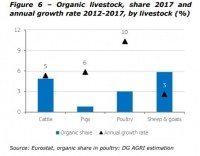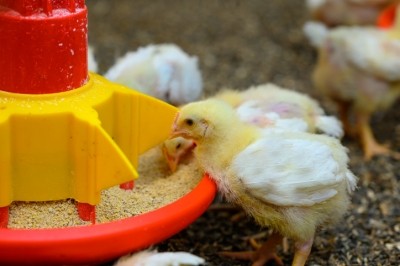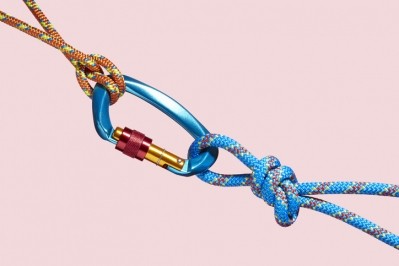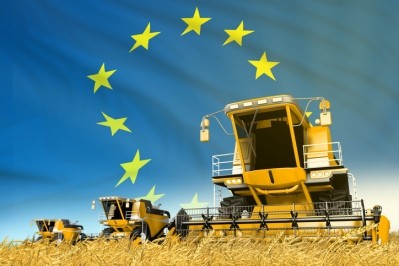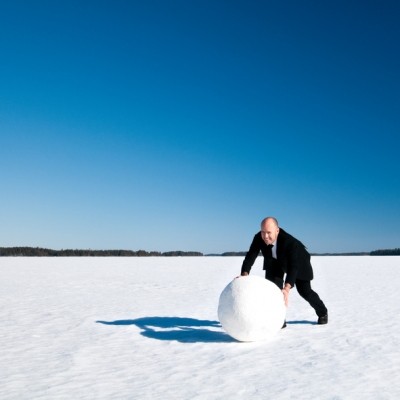EU Commission to address animal nutrition gaps in newly launched organic action plan
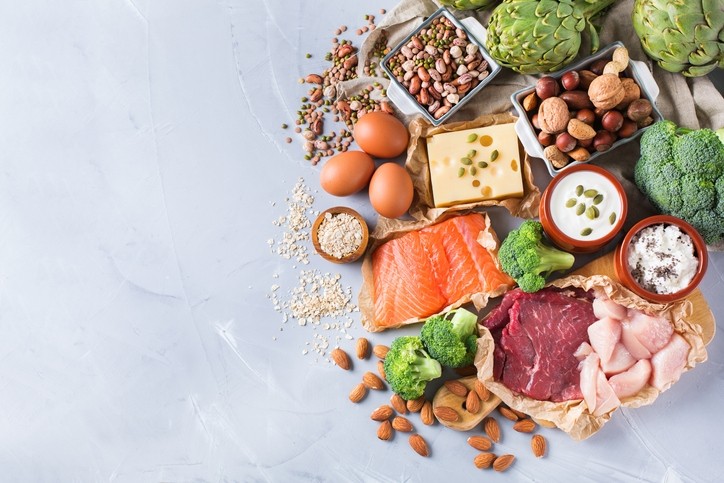
There are critical focus areas in relation to feed and animal nutrition within the communication.
Organic production, argues the EU executive, comes with several benefits: “Organic fields have around 30% more biodiversity, organically farmed animals enjoy a higher degree of animal welfare and take less antibiotics, organic farmers have higher incomes and are more resilient, and consumers know exactly what they are getting thanks to the EU organic logo.”
It says the action plan is in line with the European Green Deal and the Farm to Fork and Biodiversity Strategies, and that it will complement the national CAP strategic plans, by setting out measures that go beyond agriculture and what is offered under the CAP.
“While the action plan largely focuses on the ‘pull effect’ of the demand side, the Common Agricultural Policy (CAP) will remain a key tool for supporting the conversion. Currently, around 1.8% (€7.5bn (US$8.84bn) of CAP is used to support organic farming. The future CAP will include eco-schemes which will be backed by a budget of €38-58bn, for the period 2023–2027, depending on the outcome of the CAP negotiations. The eco-schemes can be deployed to boost organic farming.”
The Commission has put forward 23 actions structured around 3 axes – boosting consumption, increasing production, and further improving the sustainability of the sector – to ensure a balanced growth in organic farming in the EU.
Animal nutrition and feed focus
The communication outlined how organic animal husbandry must meet the EU’s high animal welfare standards and meet animal species-specific behavioral needs, in line with the EU’s disease prevention approach to animal health.
“Essential feed additives, such as vitamins, are increasingly produced by fermentation with genetically modified microorganisms (GMM). As this production technique is not in line with organic principles, and as the feed additive industry might not apply for the authorization of additives produced from conventional micro-organisms, supply problems for essential additives in organic livestock farming are increasing.
“In addition to increasing the availability of locally sourced feed proteins, alternative sources of protein for feed should be found to ensure sustainable and diversified animal nutrition. These could include insects, marine feed stocks such as algae and by-products from the bio-economy - waste from fisheries and aquaculture.”
In respect of improving nutritional inputs for organic animal husbandry, the Commission, in summary form, intends to:
- Support research and innovation under Horizon Europe on alternative sources of organic vitamins and other substances that might turn out to be necessary, and on alternative sources of protein keeping in mind their technical and economic feasibility.
- Explore means to support the application for feed additives produced without GMM, feed based on insects as well as marine feed stocks, and
- Adopt an algae initiative in 2022 to support EU algae production and support the EU algae industry to ensure the supply of algae as alternative feed material for organic animal farming.
Moreover, it will look to keep the standards of organic animal feed up to date.
EU organic animal husbandry is limited to date
It should be stressed that organic animal production in the EU remains limited in scale.
A DG Agri brief from 2019 shows that despite a fast growth, EU organic animal production remains small in comparison to total EU animal production, at about 3%.
The data, from 2017, shows about 5% of the EU cattle herd and 6% of the EU sheep and goat flocks were estimated to be organic, while the EU poultry and pigs sectors were at 3% and less than 1%, respectively.
“Nevertheless, organic pig and poultry production show higher annual growth rates (6% and 10%). The growth of laying hens, which represent about 40% of organic poultry, is estimated higher, at around 13%.”
The brief outlined how Austria showed the highest share of organic livestock in 2017, with 22% of cattle, 29% of sheep and goats and 3% of pigs organically raised. Further countries with a high share of organic animal production, as per that data, include Sweden (21% of both cattle and sheep, 2 % of pigs), Denmark (13% of cattle and sheep and goats, 3% of pigs) and Latvia (24% of cattle, 31% of sheep and goats).
Organic dairy production in the EU is highly concentrated, with a few markets dominating that domain.
“Between 2012 and 2017, the size of the organic dairy herd in the EU has increased annually by around 5.7% and the annual milk production by around 6.3%.
“Austria, France and Germany, hold 51% of the organic dairy cows in the EU.”
That data indicated that all EU member states, however, were showing an increase in organic milk production, except for Poland and Estonia which reported a decrease of production in 2017 of respectively 26% and 41% compared to 2012.
“Despite this increase, the share of organic milk in total milk production is still low, just below 3% in the EU in 2017, but growing in most member states. However, there are four exceptions: organic milk accounts for a significant share of production in Austria (16%), Sweden (15%), Latvia (10%) and Denmark (10%).”
Reaction to plan
FEFAC told us it was supportive of a market-led approach for the development of a sustainable organic chain. "The EU compound feed industry is willing to assist farmers to get access to feed compliant with organic farming rules at an affordable price."
It said access to feed ingredients fitting organic farming rules is challenging, in particular access to vitamin B2, not because of lack of technical solutions but mostly because of the difficulty in building a viable business model.
Access to protein sources meeting organic requirements on the EU market is also problematic and the EU livestock sector must nowadays rely on imports from India or China to meet the EU demand, added FEFAC. "It is therefore important that attention is paid to the development of proteins for feed use in the national strategic plans to meet the aspirational targets of 25% of EU land under organic farming."
Exploration of new feed resources like algae or insects is an aspiration that is common to both conventional and organic livestock farming and is also very important for expansion of organic aquaculture in Europe, said the industry body.
Regulatory obstacles to the development of organic farming, including those inherent to organic legislation itself, should also be identified and addressed, it added.
The EU organic farming sector, stressed FEFAC, is expected to comply with rules applicable to conventional farming in areas such as feed safety or competition law to strengthen consumer trust.
EU farming lobby, COPA and COGECA, also welcomed the 'market-oriented approach' taken by the Commission in developing its plan.
It said that organic farming has been constantly growing for the last decade - from 8.5 million hectares in 2010 to 13.8 million hectares in 2019, and that EU consumers would appear to be increasingly interested in this method of production.
“In this regard, we noticed that COVID-19 certainly reinforced this trend. Still, the current EU farmland devoted to organic farming is at 8.5%, far from the ambitious target of 25% presented in the Farm to Fork Strategy.”
Lone Andersen, chairwoman of the organic Working Party at Copa-Cogeca, said the approach considered by the EU Commission will prove to be the most sustainable one. "Although the 25% target is very ambitious and even if this target is to be met in less than nine years, Copa and Cogeca are looking forward to closely collaborating with the Commission, Council and the European Parliament, as well as with all stakeholders in the sector, to guarantee that we get as close as possible to this objective while avoiding market disturbances.”
The trade groups also emphasized as positive the strengthening of animal nutrition inputs in accordance with organic rules.
“Organic farmers have been suffering from a shortage of organic B-vitamins for ruminants and within feeds for animals in general, for several years. COVID-19 and its slackened trade relations have demonstrated how it is important for farmers to have access to inputs at a reasonable price."
It said through research and innovation, investments and new products coming to the fore, such as processed animal proteins (PAPs) like insects and algae, an enhanced and affordable new set of feeds could be placed in the organic farmer's toolbox.
The EU organic food and farming movement, IFOAM Organics Europe, also supported the EU proposal, particularly its ‘push-pull’ approach, aiming at balancing increases in both production and demand of organic products.
Jan Plagge, president of IFOAM Organics Europe said: “The publication of the new EU organic action plan will mark a new era for the transformation of our food systems towards organic and agroecology.”
The International Platform of Insects for Food and Feed (IPIFF), the European umbrella organization representing stakeholders active in the production of insects for food and feed, said the plan represented an “important leap forward” for European agriculture.
It referenced the Commission’s commitment to explore the use of feed based on insects as well as to increase the supply of locally sourced feed protein.
Insects can help to tackle certain deficiencies in animal nutrition such as vitamin B12 shortage, said the umbrella group
“Authorizing the use of insects and their derived ingredients in organic animal nutrition may positively contribute to upscaling organic poultry and pig farming. The incorporation of such locally-produced feed materials in the diet of poultry and swine would support in-conversion and organic farmers to reach the objective for regionally produced feed,” said IPIFF vice president, Adriana Casillas.
A large part of the European insect farmers are inspired by organic principles, she added.
“Thus, the finalization of the organic certification standards for insect farming activities - a process that the European Commission is committed to work on - will support the efforts of insect producers towards sustainable agricultural practices across the EU.
‘Once in place, such tangible organic standards would allow insect food and feed producers to maximize their contribution to the objectives of this action plan’.
